2024-12-10 17:55:18|Myriagame |source:minecraft skins
This tutorial is set by the author to use the CC By-NC-SA protocol.
Translation: Fouriertf
Original: https://gregtech.mechanetia.com/1.7.10/gt6Fission.pdf? TDSourceTag = s_pctim_aiomsg
This article will introduce how to successfully build and run the GT6 nuclear fissure reactor (GT6 version is 6.13.00 or higher).Note that this guide is by no means detailed. There are still a lot of knowledge about the reactor to discover and learn, but the system introduction of the system as a reactor is enough to allow you to find some difficult problems without explosion.
There are two types of reactor cores available, 1x1 and 2x2 reactor cores.The reactor is a multi -party structure composed of at least one reactor core.The reactor core accepts the coolant liquid to enter its internal storage tank, which is necessary before operation.The coolant was heated by the reaction of the nuclear fissure. The heated coolant accumulated in the second internal storage tank.
Cooling liquid can be entered from any side of the core of the reactor.After output the coolant from the red side output, you can use a wrench to adjust the direction.When the internal cooling liquid box is over half, the blue side output coolant is very useful for sending the coolant to many adjacent reactor cores.The blue side can be used to adjust the direction with activity wrench.
At the top of the core of the reactor, you can manually insert and remove the stick with pliers.The core of the 1x1 reactor has a groove for putting the reactor rod, and there are four grooves in the core of the 2x2 reactor.
The reactor stick produces neutron and interacts with it.These neutron is used to heat the cooler, and a neutron can increase the energy of 1HU for the coolant.These neutron exists on the reactor stick, so the 2x2 reactor block can have four neutron numbers.The neutron is very useful, but it also makes the nuclear reactor very dangerous:
The area around the core of the reactor generates harmful radiation, and the range is proportional to the number of neutrons in the core neutron of the reactor.Therefore, it is recommended to wear radiation -proof clothing.
Rounds can be measured by handheld leather counter or cover -ups. Its working principle is similar to other GT6 sensors, which means that it can output redstone signals based on the number of neutron counts (the number of neutrons on the reactor rod).The sensor will display the total number of neutron of the core of the reactor, so in the core of the 2x2 reactor, the sensor shows the addition of the neutron value on the four rod grooves.
If the coolant is consumed, the reactor will still produce a neutrons to cause severe fission and explode.The same thing happens when the generated thermal coolant cannot be exported, because the thermal coolant is full.Fortunately, as long as you close the reactor, you can stop the generation and interaction of the neutron, so it can also stop producing hot coolant.This can use a soft hammer to tap the reactor or use the redstone machine switch to turn off the core of the reactor.In the core of the 2x2 reactor, each reactive rod can also be controlled separately, and the choice panel is turned off or opened.In the reactor, the reactor stick that is closed in any way is called non -active, and those who are not closed are called activity.
The core of the reactor can insert or remove the fuel rod by accessing the top surface and the bottom surface to achieve automation.However, the operation can only be performed when the core or slot of the reactor you want to access, so automation usually needs to use a large amount of redstone and extender.
The Control Rods
The control stick does not produce neutron, but interacts with them.It is mainly used to control the nuclear reactor, reflects the neutron, and obtain additional efficiency (see efficiency) from the fuel rod.There are three types of control sticks:
1. Needle absorption stick
The neutron emission to the absorption rod will be transformed into two times thermal energy, which means that a neutron on the absorbing rod will generate 2Hu. Even if the neutron reaches the maximum value (see efficiency), it will help improve the efficiency of the reactor.
2. neutron reflection stick
The reflection rod is just a rebound, or in other words, the neutron that reflects any launch on them returns to the stick that emit them.This allows them to return the emission neutron to the fuel rod to increase the neutron output.
3. Modrator Rods
The slower rod is very similar to the reflection rod, but the number of neutrons received several times according to the number of activity fuel rods around them.If a slow agent rod is exposed to three activity fuel rods, the reflection volume will be three times the amount of fuel rod emissions.The activity fuel rod in the 1x1 reactor will be counted as two activists in the 1x1 reactor.However, a very important detail of the slower stick is that the update reflex multiplier is delayed in one second, so this must be reflected in the redstone control circuit, because the adjacent fuel rod is converted into a non -active state, and next time, in the next timeWhen the child counting is updated, the reflection correction still includes a non -activated fuel rod now.
However, these capabilities of the chronic agent rod are in a great disadvantage when the affected fuel rods are slowly (see the slower agent).
The fuel Rods
The fuel rod is the most important stick for nuclear reactors, because only the fuel rod produces a neutron.After the real neutron launch is calculated per second, the neutron count will return again 0 again.There are several attributes of the fuel rod, which shows on their tool prompts:
Self describes how much neutron releases the fuel rod to themselves every second.
Emission describes that when the fuel rod has no additional neutron except for its own release, the fuel rod is launched to the adjacent reaction rod every second.
Factor is used to calculate how many additional neutron will be released when the fuel rod has extra neutrons.The value of this value plus fuel rod is equal to the actual neutron launch.
Maximum describes how much neutron can be output per second without being punished (see efficiency) without durability loss.The general neutron output of the fuel rod is four times the actual neutron emission (because the output to the four sides).
These states are usually different from different types of cooling liquid, and they are reflected in the tool prompts.
Calculation of neutron emissions
En = e + ((n -s) * f)
EN -actual neutron output quantity
E -fuel rod's Emission property
S — Self attributes of fuel rods
F — Factor attribute of fuel rod
n -Narrow number of fuel rods
This is the calculation formula to promote the nuclear fission of the reactor.For those who do not want to calculate, the higher the number of neutron on the fuel rod, the higher the neutron output of the fuel rod.In the same way, the higher the coefficient of the fuel rod, the more neutron it obtains in this way.
It can be seen from the formula that it is very useful to launch a neutron reflection back to the fuel rod or put the fuel rod in adjacent to each other, because this will increase the number of neutron numbers, thereby further increasing the actual output of the number of neutron numbers.However, unless the multiple of the reflected fuel rods is equal to or greater than 1 in the actual neutron radiation, this situation will not continue infinitely.In practice, this means that 1/4 or larger fuel rod surrounded by 4 reflective rods will have an infinitely growth neutron count to
n1 -s = e + ((n0 -s) * ¼) * 4 = e + (n0 -s)
N0 -The neutron count of the current fuel rod
N1 -neutron count of fuel rods in the next second
Efficie
When this happens in the reactor, the reactor is called supercritical, if not, it is called sub -critical.The advantage of the supercritical reactor is that you can extract a large amount of energy from them with very high efficiency, but their disadvantages are that they need to be controlled, otherwise the number of neutrophils will rise to infinity, which will generate more and more heat until the cooling system will be cooled until the cooling system will beIt will be overwhelmed, either exhausted the coolant, or too much thermal coolant, no matter what method, the reactor will explode.Therefore, the number of neutron numbers is needed, and the reactor stick is controlled with redstone.
The fuel rods in the reactor will not fuse infinitely, and at a certain moment, it will become exhausted fuel rods.You can see the remaining time of the fuel stick in the tool prompt.Most types of fuel rods can maintain a few days in reality.But there are several factors that consume the remaining time faster.
If the total neutron output of the fuel rod, that is, the Self attribute plus four times the actual neutron emission, the Maximum attribute exceeding the fuel rod, the fuel consumption value will be four times faster than the fuel output value.
If the fuel rod is slow (slow), it consumes twice the original speed
Therefore, the efficiency of fuel, that is, the durability of each neutron number, is reduced by halving by using a slow fuel rod, and reaching the maximum value when the neutron output is equal to the maximum value, the constant is unchanged, and the maximum value is reduced.Times.
Therefore, in order to make the fuel rod efficiency as high as possible, you need to stabilize the neutron output to the maximum value as close as possible, but you must not exceed the maximum value.Higher stability (see stability) can also improve the average output, so absorbing rods can turn neutron to HU more efficiency.
Stability
The stability describes the difference between the real average neutron output of the fuel rod in the supercritical reactor and the maximum neutron output volume of the fuel rod.Because the supercritical reactor will continuously increase the number of neutrons on the fuel rod. If it is not controlled, these neutron numbers sometimes exceed the maximum value of the neutron.This means that some reactor rods are disabled, usually reflex sticks.This will cause the reflective rod to reflect the seeds back, thereby greatly reducing the number of neutron on the fuel rod. The actual number of neutron emission in the next calculation will also decrease significantly, which makes the reaction no longer critical.
When the reflector rod starts again the next second, the neutron output will be reduced, and it will take a period of time to rise to the maximum value.Therefore, the average neutron output volume will not be the maximum value of the fuel rod, but a value in the middle of the maximum and minimum neutron output after the reactor is controlled.
The stability of 1/4 factor fuel rod surrounded by 4 reflectors is about 1/8 of the maximum value, because the disable a reflector rod roughly means losing 1/4 neutron output
Slower sticks can also make the reactor more stable. For example, the four -slow agent rod surrounds 1/16 fuel rod, surrounded by fuel rods on all sides, and reflects 16 times, which can make one of the fuel rods invalidate and the reactor is critical.At the same time, a neutron output with a loss of about 1/16 makes the stability of the fuel rod to the maximum value of 1/32.
Moderation
The fuel rod can be slower or placed near the mortal cooler (distilled water, semi -heavy water, heavy water, and water) in the water base coolant (distilled water, semi -heavy water, heavy water, and water).Slow fuel rods will have twice the durability consumption and cannot be used for proliferation (see proliferation rods).Stopping slow fuel rods for one second, or not putting a slow -moving stick or a slow fuel stick near a activity will lead to a slow failure.
The Breeder Rods
The proliferation rod will absorb each tick to its own neutron and slowly make some changes, usually becoming a better fuel rod.When doing this, the neutron on the proliferation stick will only produce half of the HU.
The more neutron accepted by the proliferation stick, the faster the progress of the transformation into the product.In fact, with the increase of the number of neutron numbers each time, the progress increases to the index of the index:
np = n * 1.5 (n / 500)
NP — The progress obtained from the receiving neutron
n -neutron obtained by the proliferation stick
It can be seen from the formula that each 500 neutron on the proliferation stick will be increased to 1.5 to the neutron in the process.In order to obtain the optimal proliferation reactor efficiency, it is worth the maximum value of the neutron, because the proliferation efficiency can be extended to infinite.
It should be noted that the proliferation rod that turns into a fuel rod will start fission to produce neutron.The detection of this signal means that the breeding process has been completed.
Reactor Coolands
There are many types of reactor coolant, each of which has its unique advantages and disadvantages.The following introduces several types of reactors and coolant types that can be used in GT6.
1. Industrial coolant reactor
Unlike other types of reactors, this reactor is not based on the real world but completely fictional.It uses industrial coolant as a reactor coolant. It produces the corresponding thermal coolant and has medium heat capacity. HU is passed through the hot coolant per mB/L.
Compared with running fuel rods in any water -based reactor, industrial coolants can increase the Self and EMISSION properties four times, and at the same time reduce the FACTOR attribute of the internal fuel rod.This makes it impossible to build a supercritical reactor without a slow agent stick, but it can build a stable and easy -to -operate sub -critical reactor to increase the basic output in large quantities.
2. Boiling Water Reactors
Boiling water reactor uses ordinary distilled water as a cooler.Its most prominent and most obvious feature is that it directly outputs steam, rather than the thermal coolant that must be treated in the thermal exchanger.Although it is very convenient to output the steam directly, the heat capacity of the steam is also very poor, and not all steams are turned into distilled water by the turbine, which makes the cooler circuit unsustainable.
Although the data of any water -based reactor is quite good, it can only be regarded as the benchmark compared to all other coolant.Moreover, the water base reactor also has a big disadvantage, that is, any fuel rod in the slow (slow) internal (slow), resulting in halving the fuel rod response time.However, this makes the slow agent rod very useful, because the main disadvantages of using the mild agent rod have already existed in the disadvantages of and the water -based reactor.
3. Pre -pressure water reactor (Presurrized Water Reactors)
Preparatory water reactor uses semi -heavy water, heavy water and scalp water as a cooler.Different from distilled water, the pre -pressure water reactor will generate a corresponding thermal coolant. The performance of the fuel rod is the same as the boiling water reactor, and it can also slowly slowly in the internal fuel rod.Compared with other coolant, its biggest advantage is that it has huge heat capacity.The heavier the water, the greater the hot capacity.
4. liquid metal cooled reactors
The melting sodium and melting tin are used as a coolant for liquid metal cooling reactors, and the corresponding thermal coolant has a good heat capacity.Among them, the performance of the fuel rod is the same as the water -based reactor, but the internal fuel rod does not slow down, but the performance as a reactor for heat production is very low, because each neutron output is less.First, the melted sodium is only one -sixth output.
This performance makes them very suitable for building a proliferative reactor (see the proliferation rod), because more neutrons can be produced to achieve higher proliferation reactor efficiency and the heat generated can be controlled.
5. Gas Cooled Reactors
Qi -cooled piles use carbon dioxide or sorbe as a cooler, and generate corresponding thermal coolant, which is slightly higher than the average heat capacity.Because gas -cooled piles do not slow the fuel rods, it is very beneficial for building high -efficiency high -factor fuel supercritical power generation reactors.
Carbon dioxide slightly improves the Factor attribute of the fuel rod, while 氦 slightly reduces the factor attribute of the fuel rod.This makes carbon dioxide more suitable for proliferation agents (see proliferation rods), or when maintaining the reactor supercritical, it allows the use of additional absorption rods to improve efficiency.However, when using high factor attribute fuels, the pyrodermids reduce the reactor more stable (see stability) by reducing the factor attribute. At the same time, the EMISSION attribute of the fuel rod is halved, making the neutron emissions close to the maximum value, and at the same timeThere is also a slightly higher heat capacity than carbon dioxide.
6. Molten Salt Reactors
The melting salt reactor uses lithium melting lithium chloride as a coolant and produces the corresponding thermal coolant. Its heat capacity is the lowest.Like 氦, it reduces the EMISSION property of the fuel rod.
The most significant feature is that the MAXIMUM attribute of the fuel rod is increased by 25%, which helps build a more efficient (efficient) reactor.
7. Molten Thorium Salt Reactors
The melting salt salt reactor is a relatively special type of reactor, because the melting salt used used as a cooler will not change the corresponding thermal coolant, but to create a melting salt (lithium chloride) that is used to create melting salt salt, so only onlyConsumption.At a speed of 1MB/L per 10000Hu, the melting salt is transformed into lithium melting.
However, a huge advantage of melting salt salt reactor is to increase the Maximum attribute of the fuel rod by four times.Different cooling agents need to be used in the adjacent reactor core to extract energy from the melting salt reactor, which requires the so -called multi -coolant reactor.To extract energy from the melting salt reactor, it is easier to extract energy, the EMISSION property of the fuel rod used is halved and the Factor attribute is added.

National Service DNF Dark Ni
2025-01-28 09:19:27
The new screenshot of the be
2025-01-28 09:18:57
The 15th anniversary wallpap
2025-01-28 09:18:27
3DM Xuanyuan Sinicization Gr
2025-01-28 09:17:57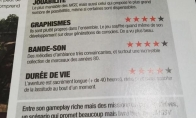
French magazine is the first
2025-01-28 09:17:27
The sneak game "Republic" wi
2025-01-28 09:16:57
The story between humans and
2025-01-28 09:16:27
Capture "Trinity 3: Artifact
2025-01-28 09:15:27
Wind direction change "Myste
2025-01-28 09:14:57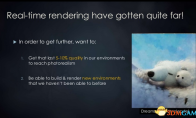
DICE's new project "Dream" w
2025-01-28 09:14:27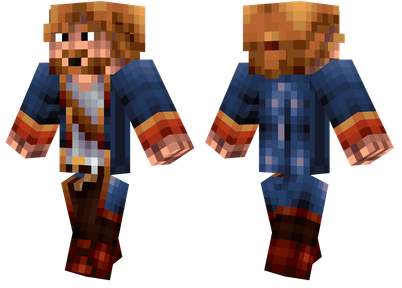
Pirate Minecraft Skins
Minecraft Skins
2024-12-10 04:11:27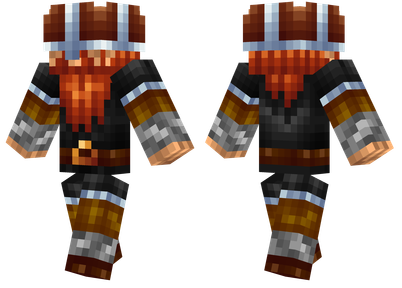
Pirate Minecraft Skins
Minecraft Skins
2024-12-10 04:11:26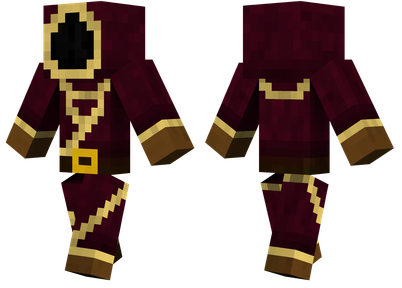
Master Minecraft Skins
Minecraft Skins
2024-12-10 04:11:25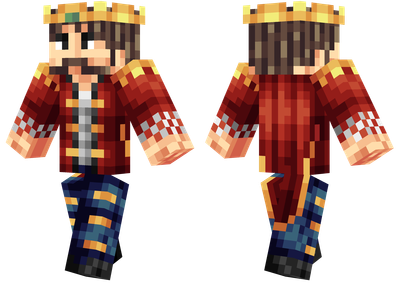
King Minecraft Skins
Minecraft Skins
2024-12-10 04:11:25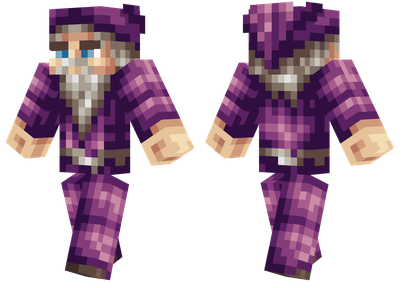
Guide Minecraft Skins
Minecraft Skins
2024-12-10 04:11:24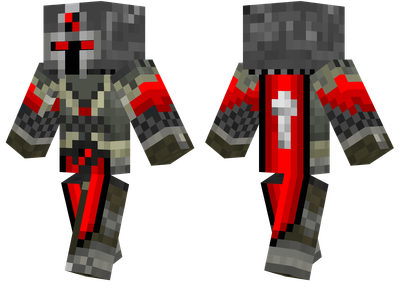
Dark Knight Minecraft Skins
Minecraft Skins
2024-12-10 04:11:23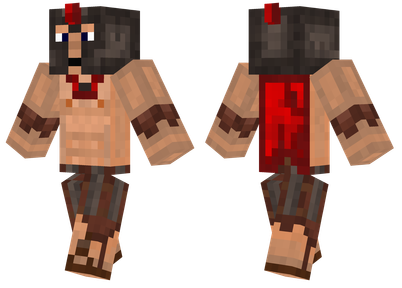
Sparta Minecraft Skins
Minecraft Skins
2024-12-10 04:11:23
Moncraft Skins of the War
Minecraft Skins
2024-12-10 04:11:22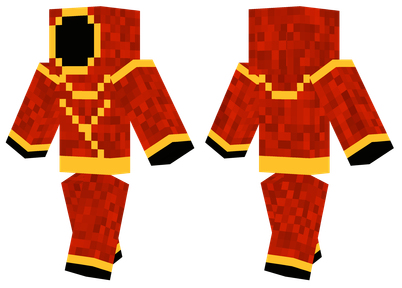
Red Witch Minecraft Skins
Minecraft Skins
2024-12-10 04:11:22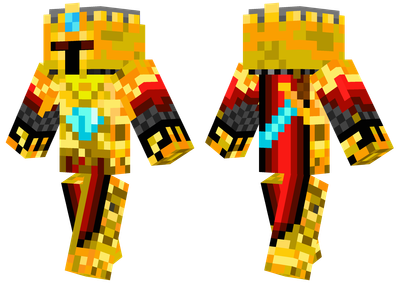
Golden Cavaliers Minecraft S
Minecraft Skins
2024-12-10 04:11:22